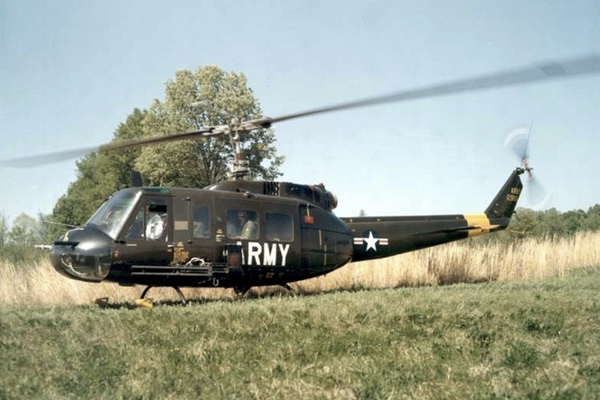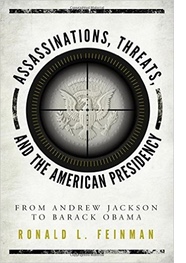What’s with All of These People Who Attack the White House?

A United States Army Bell UH-1 Iroquois ("Huey") helicopter of the type used in the 1974 White House incident.
The latest invasion of White House grounds by 22 year old Joseph Caputo is only the latest of a long line of White House intrusions by “Fence Jumpers,” dating from the time of Richard Nixon to the present.
Robert Preston landed a stolen helicopter on the White House grounds on February 17, 1974 while Richard Nixon was President. This was followed by Marshall Fields on December 25, 1974; Gerald Gainous three separate times in late 1975 and in 1976; Chester Plummer in July 1976; and Steven B. Williams in December 1976 during the Gerald Ford Presidency. Fields was able to reach within a few yards of the White House, and Gainous was able to approach Susan Ford one time before being stopped by Secret Service agents.
 When
Jimmy Carter was President, there were incidents with Anthony Henry
in October 1978 and Michael John Strickland in August 1980. Henry
managed to walk about 15 yards until accosted by agents, and then he
pulled a knife from within his Bible and slashed two agents, one in
the face, and the other in an arm. Strickland managed to come within
100 yards of who was believed to be, but not confirmed as President
Carter himself, out on the White House grounds.
When
Jimmy Carter was President, there were incidents with Anthony Henry
in October 1978 and Michael John Strickland in August 1980. Henry
managed to walk about 15 yards until accosted by agents, and then he
pulled a knife from within his Bible and slashed two agents, one in
the face, and the other in an arm. Strickland managed to come within
100 yards of who was believed to be, but not confirmed as President
Carter himself, out on the White House grounds.
During the Presidency of Ronald Reagan, David Mahonski was shot by a White House Guard on March 15, 1984, when he displayed a sawed off shotgun, and Robert Latta somehow passed security on Inauguration Day, January 20, 1985, at the White House, and wandered around the building for 14 minutes, before being spotted, with him claiming he just wanted to see the White House. This was a very alarming breach of security that he was able to pass by the Secret Service, although fortunately he did not have any weapon on his person.
President Bill Clinton had several incidents in his administration. In September 1994, Frank Eugene Corder crashed a stolen Cessna 150 plane on the South Lawn of the White House early in the morning of September 12, with the clear intention to hit the building, but instead he was killed in the crash. On October 29, 1994, Francisco Martin Duran fired 29 rounds from an SKS rifle from outside the North Lawn of the White House, before being subdued. With the White House undergoing renovations, the Clintons were living at Blair House when the incident occurred. Then, on May 24, 1995, Leland William Modjeski scaled the White House fence with an unloaded .38 caliber revolver at 10:45 PM, and was moving toward the Jacqueline Kennedy Garden near the East Wing, when he was tackled by Secret Service agents. The President was in a meeting in the White House that evening, and his wife and daughter were asleep in the White House when this incident occurred.
During George W. Bush’s Presidency, there were several similar incidents. Robert W. Pickett, on February 7, 2001, fired a .38 caliber handgun at the perimeter fence of the South Lawn of the White House, leading to a ten minute standoff and the shooting of Pickett by a Secret Service agent. On December 4, 2005, Shawn Cox scaled the White House fence, saying he was destined to marry Chelsea Clinton, not aware that Clinton no longer lived in the White House. On April 8, 2006, Brian Lee Patterson made it to the Front Lawn of the White House, screaming at the top of his lungs, and was only stopped by barking dogs and drawn guns of Secret Service agents. This was followed by intrusions by Roger Witmer on June 4, 2006, and Alexis Janicki on October 13, 2006. Finally, on March 16, 2007, Catalino Lucas Diaz scaled the White House fence with a package he claimed was a bomb, causing a security lockdown for three hours.
The intrusions continued when Barack Obama became President in 2009. On June 9, 2009, Pamela Morgan vaulted over the fence at the northeast corner of the White House compound carrying a backpack, causing a White House lockdown, just as the President was engaged in a closed door meeting with Congressional leaders on the health care reform bill. Then, on November 11, 2011, Oscar Ramiro Ortega-Hernandez fired a Romanian Cugir semiautomatic rifle from his car parked on Constitution Avenue, with nine rounds being fired, four lodging in windows of the living quarters of the First Family. It took five days to find the perpetrator and almost three more years to discover new revelations about the attack, with the Secret Service unaware for four days that the White House had sustained that many shots landing on the building.
Then, the shock on September 19, 2014 really woke up the nation to the constantly growing threat of intruders and “Fence Jumpers,” when Omar J. Gonzalez scaled the White House fence on the Pennsylvania Avenue side, ran to the North Portico of the building, and entered deep into the White House and was able to reach as far as the stairs leading up to the private quarters of the First Family. The Obamas, fortunately, had just left by helicopter for Camp David, but still this was extremely alarming, and led to a new Secret Service head, and moves to reinforce the fence with sharp spikes. And yet, Joseph Caputo, on Thanksgiving Day last week, November 26, 2015, was still able to scale the fence and run a substantial distance before being tackled.
So even with enhanced measures, there is a constant threat to the President and the First Family in their own home, the White House. Outside security for the President when he travels is important, but home security is also essential, and lax security is very worrisome. Somehow, much more needs to be done in a time of domestic terrorism, foreign terrorism, and the growing reality of major mental health problems, too often overlooked or ignored.